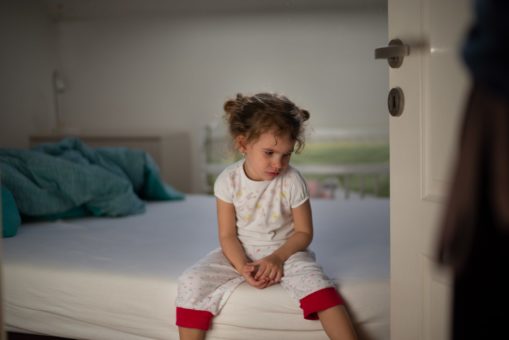Reactive attachment disorder also known as RAD occurs in children 9 months to 5 years of age. It is normal for children to attach to their parents and caregivers. In fact, stranger anxiety peaks at 6 months-12 months of age and is totally normal during this developmental stage. Children who have RAD rarely seek or respond to comfort when distressed, show limited positive affect, and have unexplained episodes of irritability, sadness or fearfulness when in contact with caregivers. These children have a history of neglect and abuse and as a result, withdrawal from anyone they are familiar with.
Signs and Symptoms Associated with RAD
Signs and symptoms of RAD, especially early symptoms, are very similar to ADHD and autism spectrum disorder (ASD) and therefore it is important that therapists and physicians understand the full history behind these signs and symptoms.
- Withdrawn appearance
- Failure to smile
- Avoids eye contact
- Doesn’t reach out to be picked up
- Cries inconsolably
- Spends a lot of time rocking or comforting themselves
- Doesn’t seem to notice or care when their parent leaves them alone
- Failure to react when parents or caregivers attempt to interact with them
- Unaffected by movements of others
- Uninterested in watching others
- Becomes agitated when adults try to comfort them
- When distressed, they may calm down more quickly without the attention of an adult
- Isn’t interested in playing interactive games or playing with toys
Signs and Symptoms of RAD in Older Kids
As kids become older, the signs and symptoms may progress and may affect their behavior around others and in school, not just their interaction with their parents or caretakers. Individuals with RAD often act younger than their age, may appear chronically anxious, and are extremely dependent on others (especially strangers)
Control issues: Most children with reactive attachment disorder go to great lengths to remain in control and avoid feeling helpless. They are often disobedient, defiant and argumentative.
Anger problems: Anger may be expressed directly, in tantrums or acting out, or through manipulative, passive-aggressive behavior. Children with RAD may hide their anger in socially acceptable actions, like giving a high five that hurts or hugging someone too hard.
Difficulty showing genuine care and affection: For example, children with RAD may act inappropriately affectionate with strangers while displaying little or no affection towards their parents.
An underdeveloped conscience: Children with reactive attachment disorder may act like they don’t have a conscience and fail to show guilt, regret, or remorse after behaving badly.
RAD Risk Factors
Children who develop reactive attachment disorder have a history of abuse or neglect. If a young child repeatedly feels abandoned, isolated, powerless, or uncared for, whatever the reason, they will learn that they can’t depend on others and the world is a dangerous and frightening place. This often happens when the following circumstances are repeated overtime:
- A baby or child cries without any comfort or response from the parent
- A baby is hungry or left in a wet diaper and is not attended to for hours
- The baby or child is socially ignored
- The infant or child is separated from their parents and/or is moved from one caregiver to another such as in adoption or foster homes.
If you think a child in your life may have RAD, please reach out to us at Discovery Mood & Anxiety for help. Contact us today.
